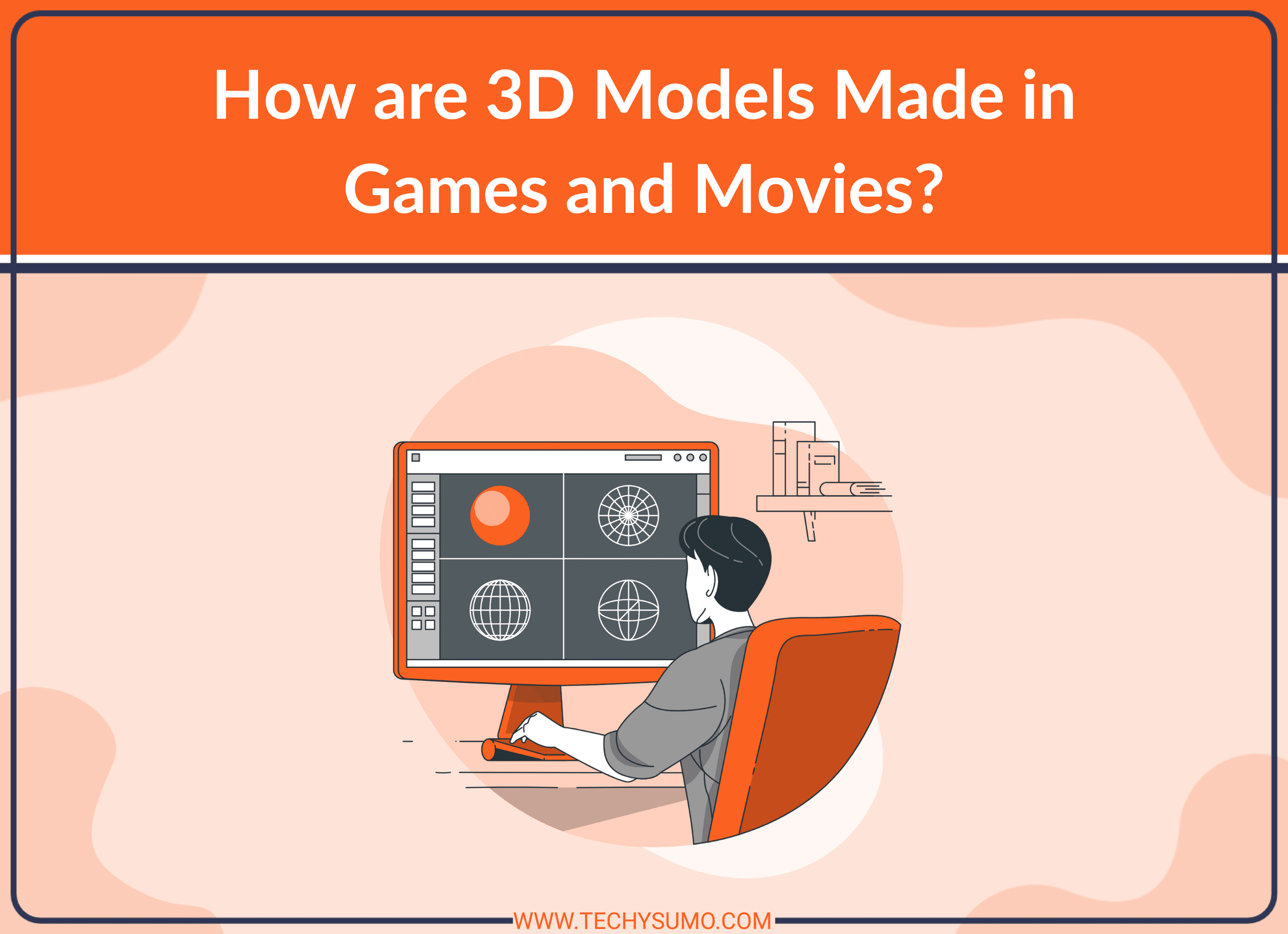3D modeling is an interesting and not-so-simple process that makes virtual worlds in games and movies.
But how are 3D models made? What are the differences and similarities between 3D modeling for games and movies? Also, what is the impact of outsourcing companies on this market?
This article looks at how 3D modeling is done, showing the methods, tools, and things to think about.
Table of Contents
Understanding 3D Modeling
What is 3D Modeling?
3D modeling is the art of creating a three-dimensional object or shape using specialized software. It’s a crucial part of modern entertainment, used extensively in video games, films, and animations.
How Does It Work?
- Concept Design: Artists sketch the initial concept.
- Modeling: Using software to create the 3D shape.
- Texturing: Applying colors and textures.
- Rigging: Adding bones and joints for movement.
- Rendering: Producing the final image or animation.
3D Modeling in Games
Creating Engaging Worlds
In video games, 3D models help make engaging and hands-on experiences. They create characters, landscapes, objects, and more.
Also Read
Key Considerations
- Performance: Models must be optimized for real-time rendering.
- Interactivity: Models should respond to player actions.
- Quality: Balancing visual appeal with performance.
3D Modeling in Games examples
1) “The Witcher 3: Wild Hunt”
- Description: This game features highly detailed character models and environments, created using complex 3D modeling techniques.
- Comparison with Films: Unlike film models, the 3D models in “The Witcher 3” are optimized for real-time rendering, balancing visual appeal with performance.
2) “Red Dead Redemption 2”
- Description: The game’s open-world environment is filled with intricate 3D models of landscapes, animals, and characters.
- Comparison with Films: The models in this game are designed for interactivity and responsiveness to player actions, unlike film models that are created for specific, controlled scenes.
3) “Fortnite”
- Description: This popular battle royale game uses stylized 3D models to create a unique and engaging visual experience.
- Comparison with Films: The 3D models in “Fortnite” are less detailed than those in many films, focusing on a distinctive art style and optimized performance.
3D Modeling in Movies
Bringing Stories to Life
In movies, 3D models are used to create realistic or fantastical elements that may be difficult to achieve with traditional filming techniques.
Key Considerations
- Detail: High levels of detail for close-up shots.
- Animation: Complex animations for lifelike movement.
- Integration: Blending 3D models with live-action footage.
Comparison: Games vs. Movies
- Detail: Movies often require more detailed models.
- Performance: Games need optimized models for real-time rendering.
- Budget: Movies typically have higher budgets for 3D modeling.
- Timeline: Games may have longer development times.
Tools and Software
Various tools and software are used in 3D modeling, including:
- Blender: Popular for both games and movies.
- Maya: Widely used in the film industry.
- Unity: Preferred for game development.
Challenges and Solutions
3D modeling presents challenges such as:
- Complexity: Managing intricate details.
- Compatibility: Ensuring models work across platforms.
- Cost: Balancing quality with budget constraints.
Solutions include using specialized software, collaborating with experienced professionals, and careful planning.
Consider reading: Benefits of game art outsourcing
3D Modeling in Films examples
1) “Avatar”
- Description: James Cameron’s “Avatar” utilized groundbreaking 3D modeling techniques to create the alien world of Pandora and its inhabitants.
- Comparison with Games: Unlike game models, the 3D models in “Avatar” are created with extremely high levels of detail for close-up shots, without the need for real-time rendering.
2) “Jurassic Park”
- Description: The film’s lifelike dinosaurs were among the first examples of 3D modeling in cinema, setting a new standard for realism.
- Comparison with Games: The 3D models in “Jurassic Park” required complex animations for lifelike movement, whereas game models often prioritize responsiveness and interactivity.
3) “Toy Story”
- Description: As the first fully computer-animated feature film, “Toy Story” utilized 3D modeling to bring toys to life in a way never seen before.
- Comparison with Games: The models in “Toy Story” were created for storytelling and visual appeal, without the constraints of real-time rendering or player interaction found in games.
The Impact of Game Art Outsourcing Companies on 3D Modeling
In recent years, the role of game art outsourcing companies in 3D modeling has become increasingly significant. These companies specialize in providing 3D modeling services to game developers and filmmakers, allowing them to access a diverse talent pool without the need to hire full-time staff.
The impact of game art outsourcing companies on 3D modeling is evident in the quality, efficiency, and cost-effectiveness they bring to the table. By outsourcing specific tasks to a 3D animation studio or 3D modeling company, developers and filmmakers can focus on the core aspects of their projects, ensuring that the 3D models are in line with their creative vision.
Making 3d models for games with a 3D game art outsourcing company, you will be able to make the entire project development process much easier.
Many developers, including big players like EA Games or Ubisoft, use the services of outsourcing companies.
Moreover, these game art outsourcing companies often have expertise in various software and tools, enabling them to adapt to the unique requirements of each project. The collaboration between in-house teams and outsourcing companies has become a vital part of the 3D modeling process, increasing innovation and improving the quality of games and movies.
3D modeling process summary
3D modeling is a process with many parts that are important in both games and movies. There are things that are the same and things that are different when making 3D models, depending on what they are for.
Knowing how 3D modeling works helps us see the talent and creativity needed to make virtual worlds. Whether you play games, love movies, or want to be a 3D artist, the world of 3D modeling has lots of chances for fun and learning.






